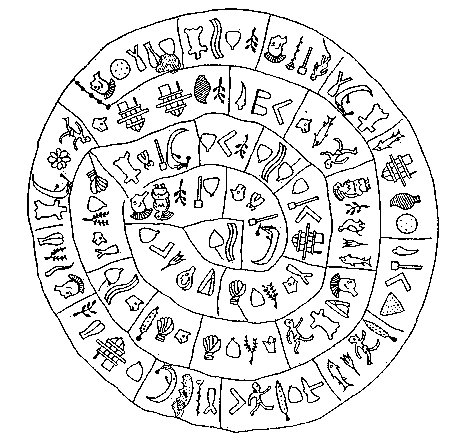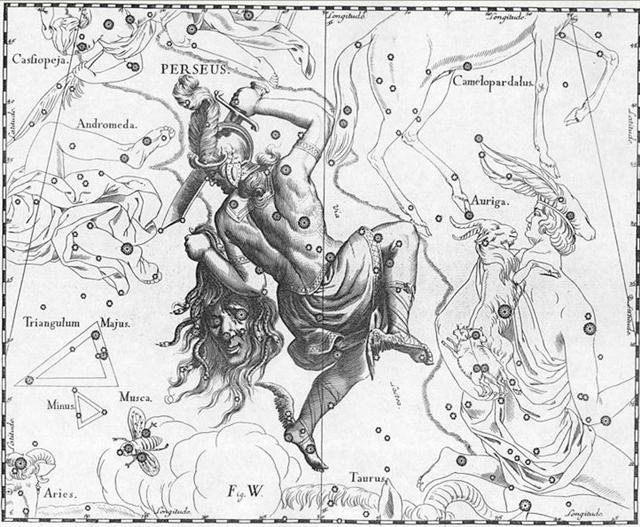ADDENDA
6. The very special glyph Eb2-1 seems to correspond to the day
when on Hawaii the priests watched the sky in order to detect
the return to visibility of the Pleiades:
... The correspondence between the winter
solstice and the kali'i rite of the Makahiki is
arrived at as follows: ideally, the second ceremony of 'breaking
the coconut', when the priests assemble at the temple to spot
the rising of the Pleiades, coincides with the full moon (Hua
tapu) of the twelfth lunar month (Welehu). In the
latter eighteenth century, the Pleiades appear at sunset on 18
November. Ten days later (28 November), the Lono effigy
sets off on its circuit, which lasts twenty-three days, thus
bringing the god back for the climactic battle with the king on
21 December, the solstice (= Hawaiian 16 Makali'i). The
correspondence is 'ideal' and only rarely achieved, since it
depends on the coincidence of the full moon and the crepuscular
rising of the Pleiades ...
|
Nov 18 |
19 |
20 |
21 |
22 |
23 |
24 (*248) |
|
 |
 |
 |
 |
 |
 |
 |
|
Eb2-1 |
Eb2-2 |
Eb2-3 |
Eb2-4 |
Eb2-5 |
Eb2-6 (48) |
Eb2-7 |
|
te
maitaki - te
maro |
hakanohoa |
e
ariki |
te
tapamea |
te
henua - tau rakau |
no ana ra tau hiva |
ko rapai a
haga |
|
υ
Herculis (242.3),
ρ
Cor. Borealis (242.4),
ι
Cor. Borealis (242.5),
θ
Draconis (242.6),
ξ
Scorpii (242.7)
SCHEDIR (Breast) α Cassiopeiae
*201.0 = *242.4 - *41.4 |
16h
(243.5)
ACRAB (Scorpion) =
β
Scorpii,
JABHAT AL ACRAB (Forehead of the Scorpion) =
ω
Scorpii
(243.3),
θ
Lupi,
RUTILICUS =
β
Herculis
(243.5),
MARFIK (Elbow) =
κ
Herculis
(243.7),
φ
Herculis (243.8) |
ψ
Scorpii (244.6),
LESATH (Sting) =
ν
Scorpii
(244.8) |
χ
Scorpii (245.1),
YED PRIOR (Hand in Front) =
δ
Ophiuchi,
δ
Tr.
Austr. (245.5) |
YED POSTERIOR (Hand Behind) =
ε
Ophiuchi,
RUKBALGETHI SHEMALI (Northern Knee of the Giant) =
τ
Herculis
(246.6).
δ
Apodis (246.7),
ο
Scorpii (246.8) |
Heart-5 (Fox)
σ
Scorpii
(247.0),
HEJIAN =
γ
Herculis
(247.2),
ψ
Ophiuchi (247.7) |
ρ
Ophiuchi (248.1),
KAJAM (Club) =
ω
Herculis
(248.3),
χ
Ophiuchi (248.5),
SHE LOW (Market Tower) =
υ
Ophiuchi,
Tr.
Austr. (248.7), ζ Tr. Austr. (248.8) |
|
VISIBLE CLOSE TO THE FULL MOON: |
|
λ
Tauri (59.3), ν Tauri (59.9) |
4h (60.9)
JĪSHUĬ = λ Persei (60.7)
COR CAROLI
(α Canum Ven.) |
υ
Persei (61.2) |
BEID
(Egg) = ο¹
Eridani
(62.2),
μ
Persei (62.8)
VINDEMIATRIX ( ε Virginis) |
Al Dabarān-2 (The Follower)
HYADUM
I = γ
Tauri (63.4)
*22.0 = *63.4 - *41.4 |
HYADUM II = δ¹ Tauri
(64.2) |
Net-19 (Crow)
AIN (Eye) =
ε
Tauri,
θ¹
Tauri,
θ²
Tauri (65.7) |
|
May 19 |
20 (140) |
21 |
22 |
23 |
24 |
25 |
And in November 18 the Breast of Cassiopeia
culminated (at 21h), which evidently could have been
documented in the center on one of the sides of the
Phaistos disc:

When the priest saw the Pleiades, ideally in November 18 (322,
*242), this was not when the Sun had been at ρ in Corona
Borealis, for in that evening the rays from the blazing Sun
would have made the observation impossible.
... In other words, the ancient Druidic religion based on the
oak-cult will be swept away by Christianity and the door - the
god Llyr - will languish forgotten in the Castle of Arianrhod,
the Corona Borealis. This helps us to understand the
relationship at Rome of Janus and the White Goddess Cardea who
is ... the Goddess of Hinges who came to Rome from Alba Longa.
She was the hinge on which the year swung - the ancient Latin,
not the Etruscan year - and her importance as such is recorded
in the Latin adjective cardinalis - as we say in English
'of cardinal importance - which was also applied to the four
main winds; for winds were considered as under the sole
direction of the Great Goddess until Classical times ...
|
Sumerian SAG |
 |
Phoenician
resh |
 |
Greek rho |
Ρ (ρ) |
|
... Resh (Arabic: rāۥ)
is the twentieth letter of many Semitic alphabets,
including Phoenician, Aramaic, Hebrew ... The word
resh is usually assumed to have come from a
pictogram of a head, ultimately reflecting
Proto-Semitic *raۥ(i)š-.
The word's East Semitic cognate, rēš-, was
one possible phonetic reading of the Sumerian
cuneiform sign for 'head' (SAG).

.jpg)
... Then I become
aware of ... a presence - a faint, ghostly
glimmering, like moonglow, that has appeared on the
solstice stone. I don't know how long it lasts, a
second or two only I would guess, but while it is
there it seems less like a projection - which I know
it to be - than something immanent within the stone
itself. And it seems to function as a herald for it
fades almost as soon as it has appeared and in its
place the full effect snaps on - instantaneously. It
wasn't there, and then it's there. As Chris had
described, the effect does curiously resemble a
poleaxe, or a flag on a pole, and consists of a
'shaft', narrow at the base but widening a little
towards the top, running up the left hand side of
the solstice stone, surmounted by a right-facing
'head' or 'flag'. An instant later an almond-shaped
spot of light, like an eye, appears a few
centimeters to the right of the 'flag' and the
effect is complete. Weirdly - I do not claim it has
any significance - this flag-on-a-pole symbol is the
ancient Egyptian hieroglyph neter, meaning
'god', or 'a god' - and not to be understood at all
in the Judaeo-Christian usage of that word but
rather as a reference to one of the supernatural
powers or principles that guide and balance the
universe. Manifested here, in this strange Stone Age
temple, it glows, as though lit by inner fire
...

Marija Gimbutas: 'To sleep within the Goddess's womb
was to die and to come to life anew'. In a system of
reincarnation the old one must die in order to be
reborn, of course. At midsummer Sun comes to a
standstill, and this must therefore be an occasion
when the 'flame of life' had to be transported into
a new body. |
We should therefore ideally count 16 days (glyphs) backwards
from Eb2-1 (43) to 43 - 16 =
Eb1-27:
|
Nov 2 |
3 (*227) |
4 |
|
 |
 |
 |
|
Eb1-27 |
Eb1-28 |
Eb1-29 |
|
te hau tea |
ka
viri ka taka |
ka viri e taka |
|
Viri. 1. To wind, to coil, to roll up;
he viri i te hau, to wind, coil a string (to
fasten something). 2. To fall from a height, rolling
over, to hurl down, to fling down. Viriviri,
round, spherical (said of small objects). Viviri
te henua, to feel dizzy (also: mimiro te
henua). Vanaga. To turn in a circle, to clew up,
to groom, to twist, to dive from a height, to roll (kaviri).
Hakaviri, crank, to groom, to turn a wheel,
to revolve, to screw, to beat down; kahu hakaviri,
shroud. Viriga, rolling, danger. Viriviri,
ball, round, oval, bridge, roll, summit, shroud, to
twist, to wheel round, to wallow. Hakaviriviri,
to roll, to round; rima hakaviriviri, stroke
of the flat, fisticuff. P Pau.: viriviri, to
brail, to clew up; koviriviri, twisting.
Mgv.: viri, to roll, to turn, to twist;
viviri, to fall to the ground again and again in
a fight. Mq.: vii, to slide, to roll, to fall
and roll. Ta.: viri, to roll up, to clew up.
Viritopa, danger. Mgv.: Viripogi, eyes
heavy with sleep. Mq.: viipoki, swooning,
vertigo. Churchill. Viti: vili, to pick up
fallen fruit or leaves ... In Viti virimbai
has the meaning of putting up a fence (mbai
fence); viri does not appear independently in
this use, but it is undoubtedly homogenetic with
Samoan vili, which has a basic meaning of
going around; virikoro then signifies the
ring-fence-that-goes-about, sc. the moon. In the
Maori, aokoro is the cloud-fence ...
Churchill 2.
Taka,
takataka.
Circle; to form circles, to gather, to get together
(of people). Vanaga. 1. A dredge. P Mgv.:
akataka,
to fish all day or all night with the line, to throw
the fishing line here and there. This can only apply
to some sort of net used in fishing. We find in
Samoa ta'ā a
small fishing line, Tonga taka the short line
attached to fish hooks, Futuna taka-taka a
fishing party of women in the reef pools (net),
Maori takā the thread by which the fishhook
is fastened to the line, Hawaii kaa in the
same sense, Marquesas takako a badly spun
thread, Mangareva takara a thread for
fastening the bait on the hook. 2. Ruddy. 3. Wheel,
arch; takataka, ball, spherical, round,
circle, oval, to roll in a circle, wheel, circular
piece of wood, around; miro takataka, bush;
haga takataka, to disjoin; hakatakataka,
to round, to concentrate. P Pau.: fakatakataka,
to whirl around. Mq.: taka, to gird. Ta.:
taa, circular piece which connects the frame of
a house. Churchill. Takai, a curl, to tie;
takaikai, to lace up; takaitakai, to
coil. P Pau.: takai, a ball, to tie. Mgv.:
takai, a circle, ring, hoop, to go around a
thing. Mq.: takai, to voyage around. Ta.:
taai, to make into a ball, to attach. Churchill.
Takapu.
Mq.: a
girdle. Ma.: takapu, the belly. Churchill.
Takau.
Mgv.: ten pairs.
Ta.: toau, id. Mq.: tekau, id. To.:
tekau, id. Ma.: tekau, ten. Churchill.
Takaure.
Fly; horse-fly. Vanaga. A fly;
takaure iti,
mosquito; takaure
marere ke, swarm. Churchill.
...
There is a couple residing in one place named Kui
and Fakataka. After the couple stay together
for a while Fakataka is pregnant. So they go
away because they wish to go to another place - they
go. The canoe goes and goes, the wind roars, the sea
churns, the canoe sinks.
Kui
expires while Fakataka swims ... |
|
KE KWAN (Cavalry Officer) =
β
Lupi
(226.3),
KE KWAN =
κ
Centauri (226.4),
ZUBEN
ELAKRIBI (Claw of the Scorpion) =
δ
Librae
(226.8),
π¹
Oct.
(226.9)
*185.0 = *226.4 - *41.4 = "Sept 22 (265) = equinox |
ω Bootis (227.2),
NEKKAR (Herdsman) = β Bootis
(227.3), σ Librae (227.5), π² Oct. (227.7),
NADLAT
(Mean Little Ones) = ψ Bootis
(227.8), π Lupi (227.9) |
15h (228.3)
ZUBEN HAKRABIM (Claw of the Scorpion) =
ν
Librae
(228.3),
λ
Lupi (228.9) |
|
ρ
Arietis (43.0),
GORGONEA SECUNDA =
π
Persei
(43.5),
ACAMAR (End of the River) =
θ
Eridani
(43.6),
ε
Arietis (43.7),
λ
Ceti (43.9)
DENEBOLA (β Leonis) |
MENKAR (The Nose) =
α Ceti
(44.7) |
3h (45.7)
GORGONEA TERTIA =
ρ
Persei
(45.1),
ALGOL (The Demon) = β Persei
(45.9) |
 |
|



.jpg)

